If you ask a person about the most cherished memory they had as a loyalty program member, it’s unlikely that they would say “It’s that time I got that $10 coupon”. That’s because financial benefits are incentives that appeal to our rationality, not our heart. If you wish to build emotional loyalty by capturing the hearts of customers, the incentive you are looking for is experiential rewards. Offering experiences as rewards isn’t new, but there are definitely unexplored ways you can do it, so make sure to keep reading! It will be an enlightening experience, for sure.
Key Takeaways — TL; DR
- The role of experiential rewards is to spark emotions
- Experiential rewards are more memorable and reinforce the buying intent of customers
- Experiential rewards build long-term loyalty vs. coupons, which have a short-term effect
- Experiences and coupons are both necessary for a well-balanced loyalty program
- Experiential rewards are characterized by their emotional value, not their cost
- There are 5 types of experiential rewards to choose from
What Are Experiential Rewards (And Why Are They Game-Changers in Brand Loyalty)
To answer this question, let’s go straight in for an expert opinion from Bernd H. Schmitt, professor at Columbia University and author of Experiential Marketing and Happy Customers Everywhere. Schmitt says that one of the most fundamental concepts of experiential marketing is that value lies not only in a product or service, but in the experience of consuming it.
Experiential rewards, as the name suggests, are all about unique, personal, and memorable experiences. Imagine that a customer who reaches the platinum tier of a loyalty program is rewarded not with a coupon, but with an opportunity to dine with a celebrity chef. Their mind would be blown! As such, the role of experiential rewards is to spark an emotion — therefore, it’s a key component for building long-lasting emotional loyalty.
For an insightful look into the curious case of experiential rewards, check out this episode of Mission: Loyalty.
Experiences as Rewards — Why Do Customers Love Them So Much?
Clearly, experiential rewards play a huge part in adding more value to a membership program. The secret lies in the cognitive biases we all harbor in the crevices of our minds. I don’t want to go full armchair psychologist, so here are the three main reasons why experiences as rewards are so powerful:
- They are worth remembering: coupons and discounts are a means to an end. That means, most likely, customers will remember the thing they bought with the coupon, but not the coupon itself. However, if the reward is a ticket to a sporting event, the reward itself (and the company who provided it) will be part of the memory.
- They reinforce them for buying from you: Many people would love to be seated in the front row at a fashion gala, but may not be willing to spend their money on it. If the opportunity is, instead, presented as a reward for their continued loyalty at your store, their attendance will feel justifiable — and more exciting. After all, since they spent their money on goods they wanted, the gala ticket will be seen as a gift!
- They give customers bragging rights: Touring the headquarters of a craft beer company is great, but telling the story on social media for all the envy of your friends is even better! Experiential rewards have the power to generate social media virality for both the customer and the brand.
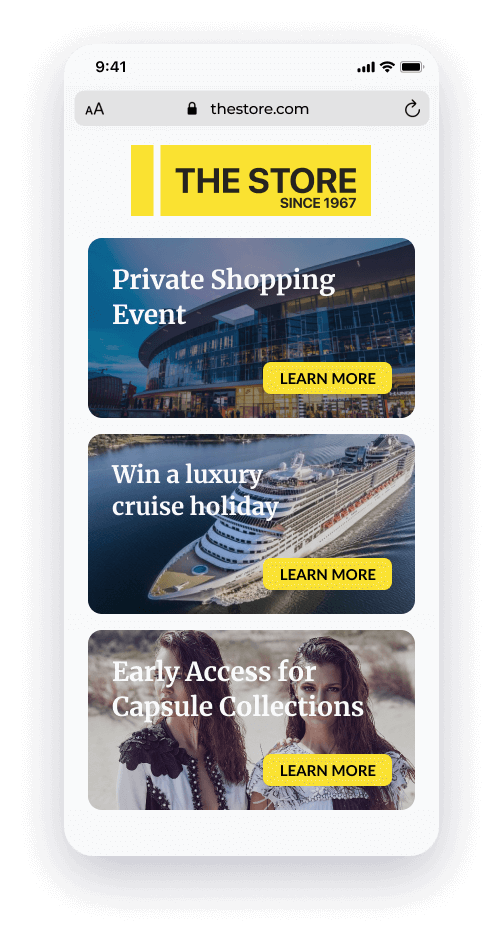
Experiential VS “Normal” Rewards – The Age-Old Dilemma
Experiential rewards are undoubtedly an exciting aspect of a loyalty program — but they aren’t the only perk. Completely abandoning traditional reward types in favor of purely experiential rewards is a mistake. Sure, experiential rewards are more exciting than any coupon, but that doesn’t mean that coupons are useless.
In reality, both of them play an important role as incentives.
- Known as hard benefits, transactional rewards or freebies deliver instant gratification. That’s why they are so great at catching the eyes of potential new members and reactivating those dormant members, or customers at risk of churning. These types of rewards generate short-term loyalty.
- Soft benefits, which include experiential rewards, create long-term brand love. They are usually harder to obtain or require more time to take effect.
- A truly enticing loyalty program features both soft and hard benefits. Coupons and smaller-value rewards can be used to hook new members. Then, you can develop their lifetime value with the appeal of unique experiences, which are reserved for high-tier members.
The Right Business Perspective: Think “Value”, Not “Cost”
The power of experiential rewards comes from their perceived value. That doesn’t necessarily mean that your rewards have to cost a lot — but elements like convenience, uniqueness, packaging, and execution will help make your rewards feel more valuable to loyalty program members. So instead of sweating over providing free yacht trips in Monaco, think about how you can create maximum value at minimum cost. Perception is the key to great experiences.
For example, the actual cost of early access to products or sales is relatively low — you just need a platform where you can set up different access privileges for members. For customers, however, it’s a symbol of status and exclusivity. The same goes for partner rewards or influencer marketing: if you play it smart, you can strike a deal behind the scenes with a partner who will take care of either the promotion or the provision of the reward.

Which Type of Experiential Reward Fits Your Loyalty Program?
Although experiential rewards are already a popular part of loyalty programs today, we will see more of them in the future. Antavo’s Global Customer Loyalty Report 2022 shows that 65.2% of companies with a loyalty program plan to add experiential rewards to their offering.
But what kind of experiences best fit a loyalty program? There’s no single answer to this question. Experiential rewards are like superpowers in a comic book: each hero has their own unique abilities, which they are known for. The key to success is offering one-of-a-kind, personal, and memorable experiences that align with the interests of your customers and create a deeper emotional connection with your brand.
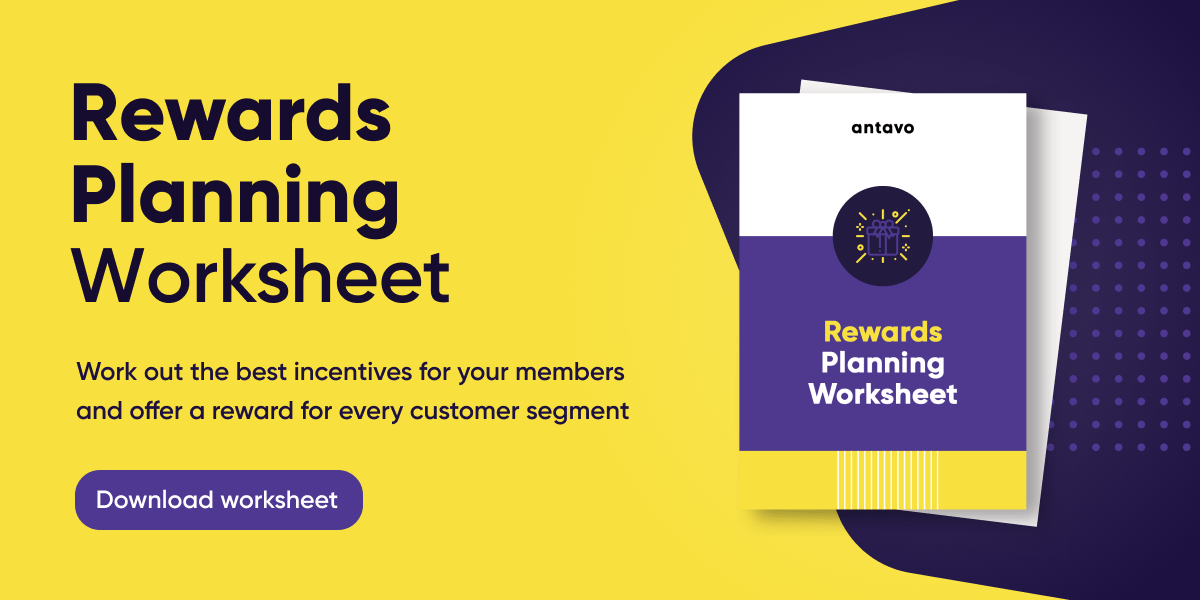
Of course, I can’t let you go without practical advice, so here are the top 5 experiential reward categories to consider adding to your loyalty program.
1. Privilege-based rewards
This category includes all things that make the members of a reward program feel special or privileged. Early access to new product drops or members-only sales events come to mind, but fast-food restaurants and brick-and-mortars can also include priority treatment, like express checkout or access to VIP customer service. One thing to keep in mind: you should reserve these privileges for a selected few. Not because they cost a lot but because the more people have access to them, the less impactful they will feel.
The Curator from MATCHESFASHION — Embodying exclusive treatment
UK-based luxury fashion brand MATCHESFASHION knows how to pamper their most loyal customers. The company’s loyalty program has four tiers, each one offering an increasing list of privilege-driven rewards. This includes birthday rewards, invitations to private sales, priority access to online styling services, free shipping and so on.
What puts ‘curated’ into The Curator Club’s experience? The company hand-picks certain rewards for members. Each year, customers receive two to five (depending on their tier) surprise rewards, which range from access to events and experiences to exclusive offers and gifts. This element of surprise and delight makes every single year memorable for members.
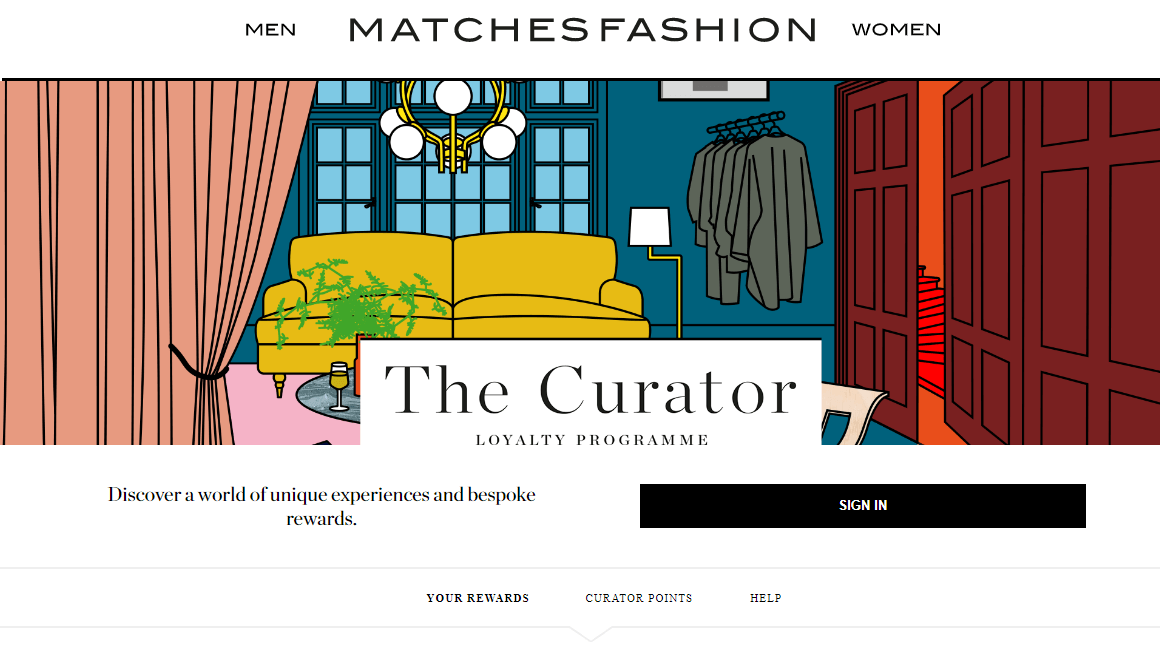
2. Exclusive community events
Similarly impactful, but still budget-conscious, are community events. Contrary to privileges, the goal here is to let members share the experience, preferably during a live event. This can be an anniversary party in your flagship store, special movie screenings, flashmobs, or any sort of gathering where members can meet each other and mingle. Besides helping to foster a like-minded community, exclusive community events are an excellent way to find potential brand ambassadors or influencers.
REI Co-op — The perfect blend of soft and hard benefits
As an American retail and outdoor recreation services corporation, it’s no surprise that REI knows how to cater to an active community. Though the membership comes at a one-time subscription fee of $30, REI Co-op makes up for it big time. Co-op members are eligible for transactional incentives like discounts on bike services and rentals.
Even better, they offer experiential rewards. In addition to REI’s classes, day trips, and nationwide adventures, the company also hosts unique local events for the community across the country. Last but not least, the outdoor company champions the idea of noble causes, donating part of each membership fee to charity.
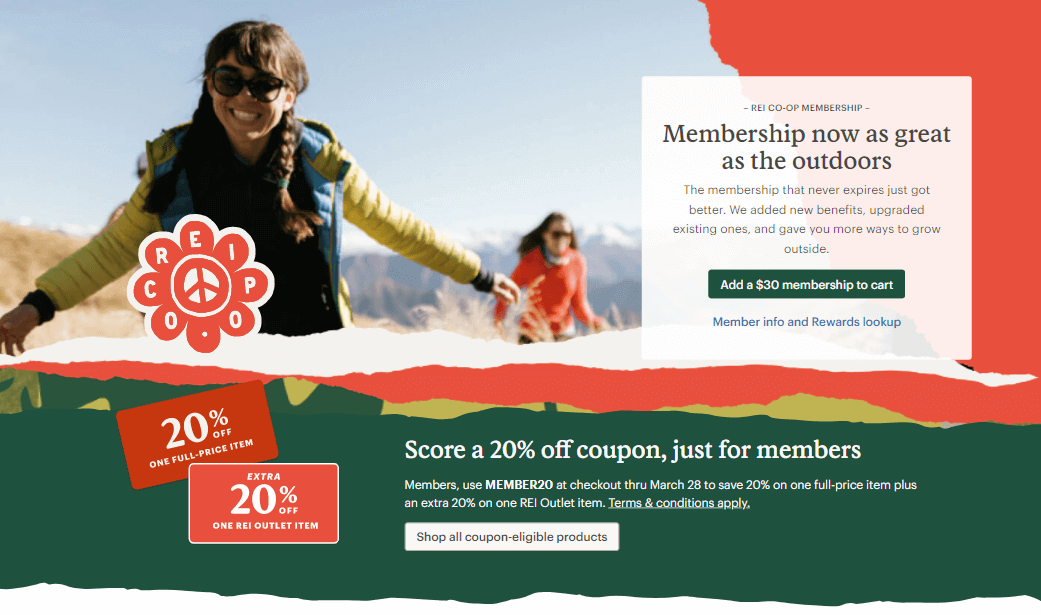
3. Personalized brand experiences
Some customers crave special experiences where they can interact with their favorite brand, but want it to be a private event. True one-on-one brand interactions, like a private appointment with the brand’s stylist or a guided tour in the company’s headquarters, create far more powerful impressions. However, organizing this kind of experience may require a lot of planning and human resources (the stylist needs to be available for the appointments). Still, these types of interactions generate a lot of buzz on social media.
House of Diesel — Upping the ante for experience-based rewards
Diesel – the fashion company that went from denim to full-on successful living, approaches experiential rewards in a smart manner. Unlike many other loyalty programs, House of Diesel unlocks early access to sales on the lowest tier. This helps members ease into the feeling of privilege. Then, as they progress, they can get their hands on other experience-based benefits, like previews for upcoming collections, or invitations to member-only events.
House of Diesel’s main selling point, however, is the private shopping session with the brand’s denim expert. Only members who reach the “Penthouse” tier can access this unique chance. And for true brand lovers, that kind of experience is priceless.
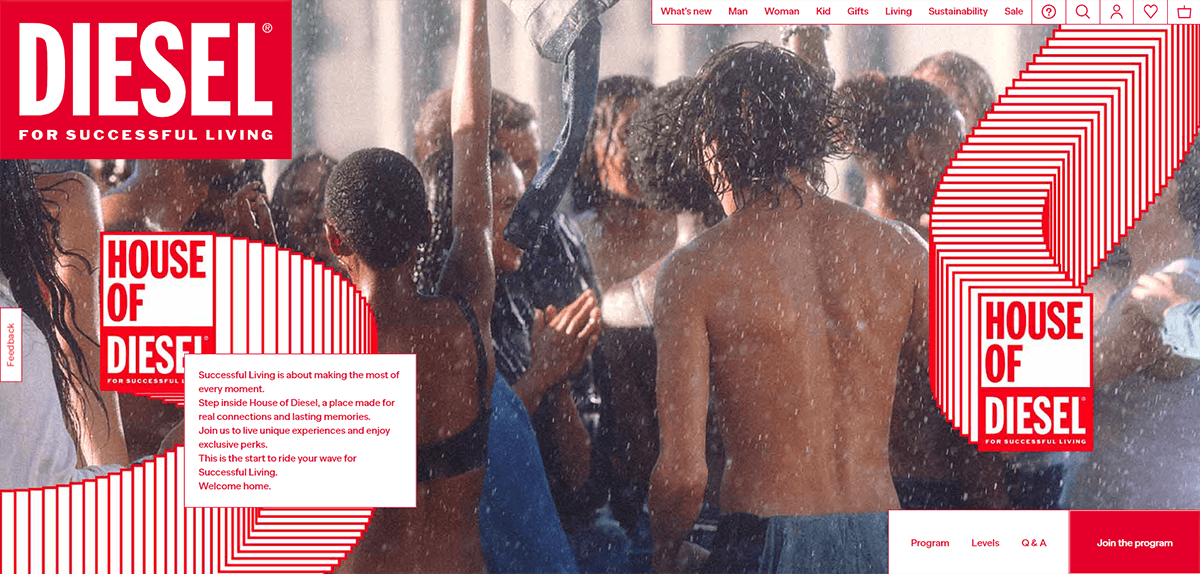
4. Adventure experiences
Now we are getting into the territory of higher-profile experiential rewards. Ranging from tickets to cultural or sporting to a free day in a theme park, experiences centered around fun activities steal the spotlight. By themselves, these types of incentives can be costly, which is why it’s worth looking for viable partnerships to support your objectives. Even better, brands that are part of a coalition can lend their services to one another, creating a truly experiential offering.
BMW Inside Edge — An exclusive, perks-driven reward experience
The UK branch of international car manufacturing giant BMW has built a loyalty program purely for company car drivers. Drivers who want to become members of BMW Inside Edge must register using their license plate numbers. Once they are in the club, they have instant access to all benefits — no tiers or points required.
Inside Edge perks include free coffee and muffins at partner Costa Coffee, free movie rentals, and discounted access to learning courses. However, the most outstanding benefit thus far was a limited-edition raffle, where the winner received a ticket for a PGA golf tour event. This was a very clever move by BMW, as using raffles or other chance-based systems helps to level the playing field when you have to decide who wins a limited, high-value experience.
Watch BMW UK’s presentation to see what motivated them to create such a unique loyalty program.
5. Luxury experiences
The top brass of experiential rewards are those that involve a luxury or high-end journey. This includes aspirational rewards like stays at exclusive resorts, private island getaways, or tickets to luxury cruises. Cooking classes with a celebrity chef or a spa treatment at a wellness retreat can also be considered luxury experiences. These types of rewards should require a significant amount of effort from loyalty program members to offset the cost of the rewards. You might require a lot of points or make it a one-time reward for those who ascend to the top of a 7-tier program. One quick tip is to stay away from raffles — that might risk cheapening the feeling of luxury.
Marriott Bonvoy Moments — Offering unforgettable experiences
If you are looking for inspiration on how to approach luxury experiences, I recommend starting with either travel loyalty programs or hotel reward programs. Marriott Bonvoy Moments, in particular, really sets the standard: they offer a huge selection of luxury and adventure rewards, ranging from culinary to sports and entertainment.
Whether you are looking for a cooking course in a Michelin-star restaurant, a concert in Dubai’s Coca-Cola arena, or a luxury stay at a Malibu villa, Marriott Bonvoy Moments has something dreamy in most major cities around the globe. The rewards come at a high cost, requiring quite a number of stays in their hotels. And while some experiences have a fixed point price, others are made available by auctions — a far better choice for luxury brands than raffles.
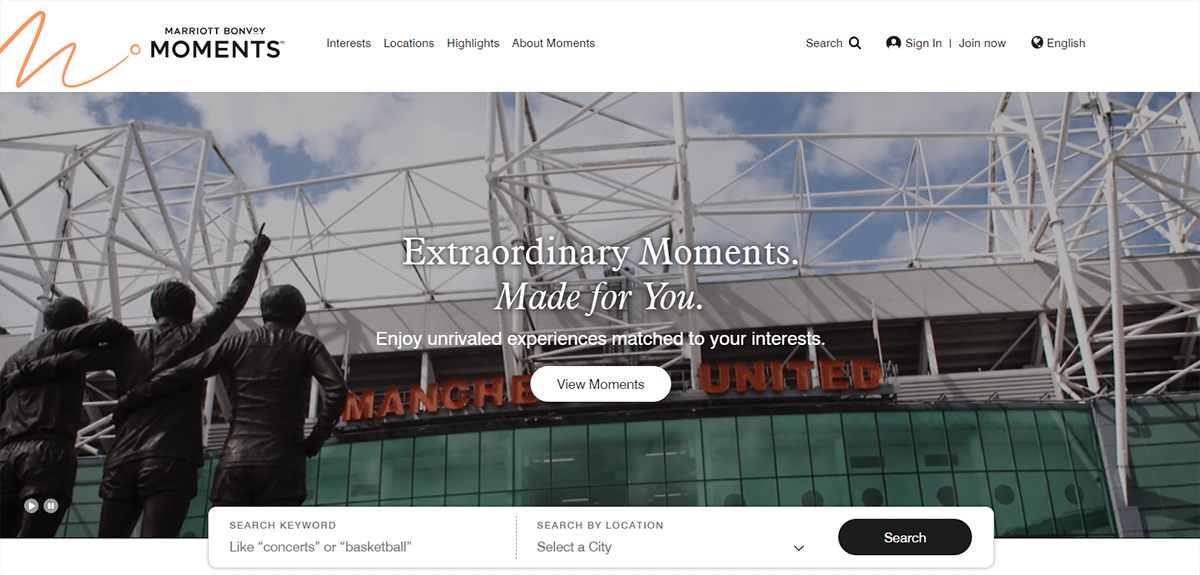
Experiences Are the Currency of True Brand Love
Mark my words: using experiences as rewards will become mainstream in the coming years. But in the present, they are still a novelty that has the power to turn heads. Make sure to act before the gold rush for experiential rewards begins, and establish yourself as an innovative loyalty program before the competition does.
Already have a concept for your experience-driven reward system, but still missing the last piece — technology? Antavo’s experts are more than happy to arrange a tech showcase for you. Simply book a demo or, even better, send us your RFP.
If you are still in the process of building the concept, don’t forget to download our handy worksheet to streamline your reward planning.


